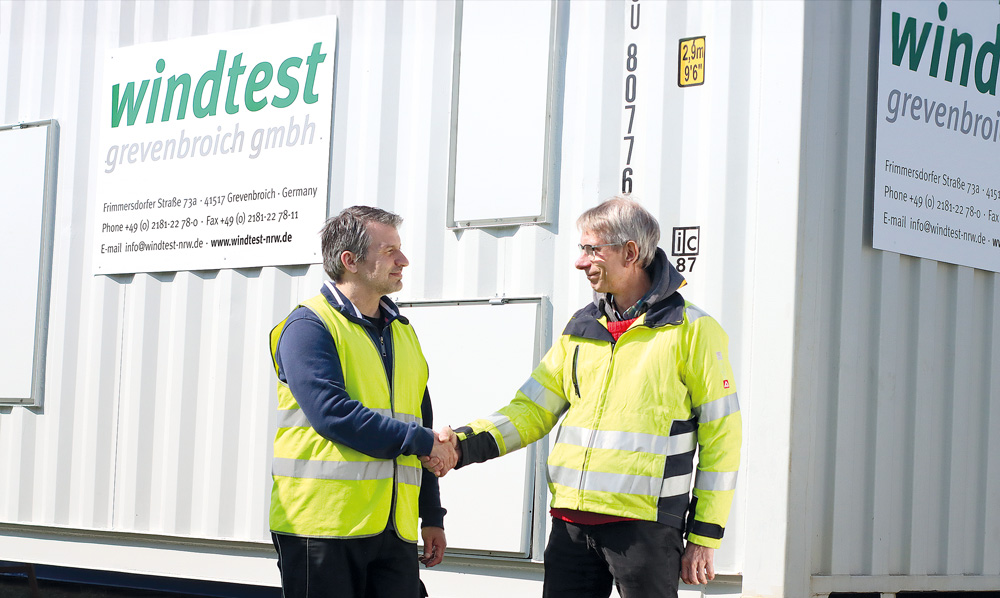Noise Emission Measurement
Prototype Measurement
Emissions and immissions – two sides of a coin that of course are directly linked. The sound emission characteristic values of a wind energy system (WES) are one of the characteristics of a WES and the basis for the project planning of individual installations and wind parks, since certain immission characteristic values must be observed for residential buildings.
Sound Emission - Characteristic of a WES
Unacceptable deviations of sound emissions result in the exceedance of standard values and in the worst-case scenario can lead to the shut-down of existing WES.
The precise determination of emissions is only possible by measuring the special conditions of individual WES according to international and national directives.
The characteristic values are generally given for different wind speeds (WS) of 6 m/s to 10 m/s at a height of 10 m.
Benefit to the Customer
wtg offers the necessary tests in the form of sound measurements or sound certificates, according to customer requirements and in accordance with national and international standards. Customers can be manufacturers, operators, authorities or courts. Sound emission measurements are carried out based on the FGW Directive "Technische Richtlinie für Windenergieanlagen, Teil 1: Bestimmung der Schallemissionswerte" (Technical Directive for Wind Energy Systems, Part 1: Determination of Sound Emission Values) or the IEC 61400-11. Equally, sound emissions of wind parks are measured during the final inspection according to the construction permit. Furthermore, wtg provides support for varied special projects exceeding the pure remits of WES. As a rule, this applies to customers’ special projects, which require special acoustic expertise.
- wtg is a Designated Measuring Agency for sound measurements of WES according to § 26 BimSchG (German Federal Immission Control Act) in 15 federal states
- Accredited according to ISO EN 17025 for sound emission measurements, sound immission measurements, structure-borne sound measurements and sound immission projections
- Representative of the FGW Technical Committee, the most important national body for the subject of sound in WES
- FGW Conformity Seal
- Co-ordinator of the "Noise Expert Group" of MEASNET
Implementation
Procedure:
First the general measuring conditions in the near and far field around the WES, which could influence a sound emission measurement, are tested:
- Structure of the site
- Background sound sources in the proximity
- Background sound sources at a distance of up to 10 km
- Wind speed: During the measuring, a wind speed of app. 6 - 10 m/s (even better of 5 - 12 m/s) at a height of 10 m should prevail, in order to obtain sufficient measurements for a measurement complying with the standards
- In case of rain, no data can be recorded due to the noise of the rain affecting the microphone
Recorded Data
Recording of the following data:
- Different sound pressure levels (with the WES in operation and at a standstill),
- Effective power delivered by the WES,
- Various other control and evaluation data (background noise, rain etc.),
- Rotational speed of the system.
Data Evaluation
Evaluation:
Based on the recorded data, the following characteristic values of the WES can be determined, depending on the directive:
- The immission-relevant sound power level LWA,
- Impulse incorporation,
- Tone incorporation,
- Area under acoustic stress,
- Various other control and evaluation data.
The results are documented in a comprehensive report.
Structure-borne Sound Measurements
In order to limit or identify malfunctions or tone incorporation problems of the WES, wtg is conducting structure-borne sound measurements. These are carried out by measuring multi-channel oscillations at the power train, tower and rotor blades.



